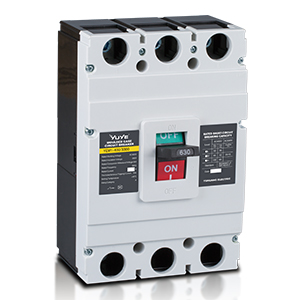In the field of electrical engineering and power distribution, ensuring the safety and reliability of electrical systems is of paramount importance. One of the most effective ways to achieve this is by installing molded case circuit breakers (MCCBs). These devices not only protect circuits from overloads and short circuits, but they also play a vital role in minimizing the transmission of faults. In this article, we will explore the steps involved in installing an MCCB, with a particular focus on how Yuye Electrical Co., Ltd. can assist in this process.
Understanding Molded Case Circuit Breakers
Molded case circuit breakers are electromechanical devices designed to protect electrical circuits from damage caused by overloads and short circuits. They are housed in a molded case that provides insulation and protection from environmental factors. Molded case circuit breakers are available in a variety of ratings and configurations for a wide range of applications from residential to industrial environments.
The primary function of an MCCB is to interrupt the flow of electrical current when a fault occurs, thereby preventing damage to equipment and reducing the risk of fire. By effectively isolating the faulty circuit, the MCCB helps minimize the transmission of the fault throughout the electrical system, ensuring that only the affected circuit is disconnected while the rest of the system remains operational.
The Importance of Proper Installation
The effectiveness of molded case circuit breakers in reducing fault transmission depends largely on their correct installation. Improper installation can lead to inadequate protection, increased electrical hazards, and damage to equipment. Therefore, a systematic approach must be followed when installing molded case circuit breakers.
Step by step installation process
1. Preparation and planning
Before you begin the installation process, it is vital to conduct a thorough assessment of your electrical system. This includes determining the appropriate size and rating of the MCCB based on the load requirements and specific application. Yuye Electrical Co., Ltd. offers a range of MCCBs in different specifications, allowing you to choose the most appropriate option for your needs.
2. Gather tools and materials
Before you begin installation, make sure you have all the necessary tools and materials on hand. Common tools needed to install an MCCB include screwdrivers, pliers, wire strippers, and a multimeter. In addition, you’ll need the MCCB itself and the appropriate mounting hardware and wires.
3. Power outage
Safety is of the utmost importance when working with electrical systems. Before continuing with the installation, make sure the power to the circuit is completely turned off. Use a multimeter to verify that there is no voltage in the circuit.
4. Installation of MCCB
The next step is to install the MCCB in the designated location. This is usually done in a switchboard or electrical enclosure. Follow the manufacturer’s guidelines provided by Yuye Electric Co., Ltd. for proper installation procedures. Make sure the MCCB is securely fastened and that there is adequate ventilation space.
5. Wiring connection
After installing the MCCB, the next step is to make the necessary wiring. First connect the input power to the line terminals of the MCCB. Make sure the connections are secure to prevent arcing or overheating. Next, connect the output load to the load terminals of the MCCB. The wiring diagram provided by Yuye Electric Co., Ltd. must be followed to ensure proper connections.
6. Set up your trip
Most MCCBs come with adjustable trip settings that allow you to customize the level of protection for your specific application. Refer to the manufacturer’s instructions to set the appropriate overload and short-circuit trip settings. This step is critical to ensure that the MCCB operates effectively in the event of a fault.
7. Test the Installation
Once you have completed the wiring and setup, before restoring power, you must test the installation. Use a multimeter to check for continuity and ensure there are no short circuits. Once you have verified that everything is working properly, you can proceed with restoring power to the circuit.
8. Regular maintenance and inspection
To ensure that the MCCB continues to be effective in reducing fault transmission, regular maintenance and inspection are necessary. Regularly inspect the MCCB for signs of wear, overheating or damage. Yuye Electrical Co., Ltd. recommends routine testing to verify the functionality of the MCCB and ensure that it is operating within specified parameters.
The installation of molded case circuit breakers is a critical aspect of electrical system safety and reliability. By following the correct installation procedures and using high-quality products from Yuye Electrical Co., Ltd., you can significantly reduce the transmission of faults and protect your electrical infrastructure. Remember that safety is always the top priority, and when in doubt, consult a qualified electrician to ensure that your installation meets all necessary standards and regulations. With the right approach, molded case circuit breakers can provide peace of mind and lasting protection for your electrical system.









